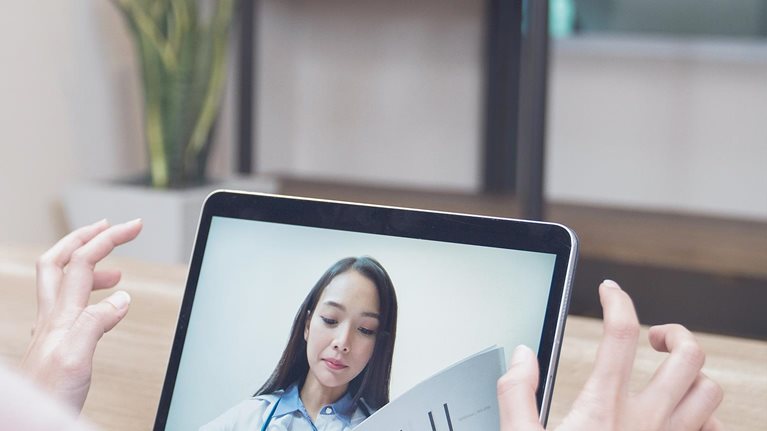Changing how a country of 1.4 billion people approaches healthcare—amid a global pandemic—is not a task for the fainthearted. Yet Shobana Kamineni, executive vice-chairperson of India’s Apollo Hospitals, has built a healthcare ecosystem that comprises more than 7,000 physicians and 30,000 other healthcare professionals. By mid-2020, six months after launch, Apollo 24/7, Apollo’s holistic digital health platform, had enrolled 4 million people, with around 30,000 downloads a day.
In August 2020, during the Southeast Asia 2020 Virtual Congress of the McKinsey HealthTech Network, moderated by McKinsey senior partner Axel Baur, Kamineni discussed the travails of establishing a healthcare ecosystem at such scale. A condensed and edited version of Kamineni’s remarks and the subsequent discussion follows.
Insights amplified by COVID-19
Today we’re entering a new era defined by insights and discoveries that elevate the greater well-being of the human on this planet. The information age has moved now to the age of insights, and I want to bring out five insights that the pandemic has amplified.
The greatest shift in the pandemic is undoubtedly toward digital health, and my first insight concerns telehealth. Customer adoption has skyrocketed, from 11 percent of US customers using telehealth in 2019 to 46 percent now using telehealth to replace canceled healthcare visits. In India, 50 million Indians accessed healthcare online from March to May 2020, with 80 percent of all telemedicine users and patients using it for the first time.
Second, huge shifts are going to take place for hospitals, from inpatient to outpatient care and from outpatient to home care. What was once done in a hospital room may be done in offices or in homes, including procedures such as chemotherapy and X-rays. A lot of hospital care is becoming more mobile. We were thinking about home care from a perspective of increasing our geography at lower costs for patients and ourselves, because, per bed, hospitals are really expensive. Now, we’re seeing that patients prefer home care because they think it’s safer to stay home than to come into a hospital for an elective procedure.
The Internet of Things—connected devices—is my third insight, and actually it’s a no-brainer. Smart devices have become more prominent as people have invited them into their lives to help fight COVID-19 and to share data with their doctors. However, a study said while people are benefiting from this technology, their concerns about how data are used is rising exponentially. Of healthcare consumers surveyed, 70 percent said that they were concerned about data privacy and businesses tracking their online activities, behaviors, locations, and interests. Digital health of the future has to address how we’re going to protect data privacy.
COVID-19 has not slowed digital innovation, but amplified it to historic levels. Healthcare organizations are elevating technology agendas to explore emerging digital technologies that provide the right infrastructure to help people feel safer.
Fourth, the metrics of healthcare will change. They say you need one doctor for every thousand patients, but today with telehealth it could be one for every 1,800. Doctors, nurses, everyone is getting more efficient. In India, 60 percent of hospitals, 75 percent of pharmacies, and 80 percent of doctors are in urban areas. This creates a rural ‘famine’ for health, but we can actually change this metric with better connectivity. Across the world, there are new productivity metrics that are not tethered to geography, but possibly to latency, and healthcare collaboratives will emerge as hospitals, tech companies, insurers, and governments start converging.
My last insight concerns much greater public-private engagement. This pandemic has brought out two great partnerships in India. One is a project, which Apollo is part of, that is a coalition of hundreds of digital health companies and hospitals that has launched a nationwide telemedicine platform for COVID-19 care. The second is eSanjeevani, which was promoted by the Ministry of Health, and includes the Aarogya Setu app for contact tracing, which 150 million Indians have downloaded. The situation has accelerated engagement between the public and private sectors at the intersection of digital technology and healthcare experiences, and the future of care will demand rethinking core assumptions about the intersection.
The power of the digital and the physical
So, here we have a 37-year-old hospital system. We have 10,000 beds, 70-plus hospitals across India, 300 clinics, and close to 4,000 pharmacies. We were in health insurance, and we are still a third-party administrator (TPA).1 We had this entire ecosystem, probably the only one in the country with such a presence in the physical world. We already knew before the pandemic that we could never live just in the physical world—but during the pandemic we had to turn on a dime.
We were fortunate to already have had digital technologies available with Apollo 24/7. Out of this, we envisioned an ecosystem where a person could get everything: you could get it virtually, but you could also get it physically. Whether you wanted a doctor consult, the medicine you required, or a diagnostic test, it was available, and as an added benefit your records were all in one place. What we were able to do was make the whole healthcare system a giant ecosystem. Without something like this, hospitals across the world would have lost so much money because the beds are empty.
Our Kavach project is an example of how the pandemic accelerated these efforts. We integrated 2,500 of our hospital beds and another 2,000 hotel beds, plus home care, to create a complete COVID-19 solution for thousands and thousands of Indians. It’s the largest effort outside government in the country so far. While we were fighting the pandemic, we were also growing our network. Today, we have about 4 million users of Apollo 24/7, and out of the 4 million, we’ve seen 25 percent of them come back week after week.
That’s the power of the digital and the physical. The healthcare model can never be just virtual. It has to be anchored in the omni, the duality of physical and virtual that is this new age of health. When people ask me about the healthcare system of the future—will it be second opinion networks or any of these apps they think are very cool to talk about—I tell them it’s never going to be anything unless it’s anchored by the reality of the care you want to give to a patient.

The great acceleration in healthcare: Six trends to heed
Breaking traditional attitudes
Changing internal attitudes toward healthcare was very tough. We started Apollo 24/7 in February 2020, just a month before the lockdown took place in India. Doctors said they were always too busy with their practices because, first and foremost, patients in India want to trust when they can see their doctor. Patients can go online and choose from 100,000 doctors, but at the end of the day, they want that one doctor they can trust. We said because of our brand, patients choose our brand and they use our doctors.
We brought on board 3,000 doctors within the first 60 days alone, and today we have more than 7,000 physicians and 30,000 other healthcare professionals with us. And we have a larger ecosystem of Apollo doctors asking to be brought on board. Recruitment became easy, but it would have been really tough to bring to scale if the doctors had remained very difficult to convince [to join the Apollo network].
Understanding that the virtual cannot be disconnected from the physical was also powerful. For this to really work, I had the CEO of our pharmacies attend and participate in a lot of what we do in 24/7 because we expect all the deliveries to be done from the stores. Across almost 500 towns and cities, 45 percent of India’s population lives within 30 minutes away from an Apollo pharmacy. So, unless we could really connect and make our pharmacy team believe in the 24/7 proposition, it would have been so much more expensive for us to promise to deliver medicine to these customers within two hours.
And finally, coming from a fiscal reality, we don’t know how to invest without a path to profitability. In some way I’m still old school, and as we were drawing up our business models, we always made sure that in the ecosystem we could deliver at a lower cost and could be more productive.
Facing down the digital competition
At the beginning, we said that we’re not going to give away investors’ money and just burn it like that. We realized that it’s not just discounts driving customers, it’s lifetime value. If you sign on with us, we have the ability to cure your disease. When you come in, you would be cared for better. We can give you better medication, make sure you take it on time, keep up with the reminders and refills, and make sure that if new medicines come in, you will have access to them and make sure you have safe medication. And, we will wrap it up in a medical package that is actually looking after you, saying, for instance, if you take these tests, we can make sure that with compliance your diabetes won’t progress, your blood pressure will be under control.
The views and opinions expressed are those of the interviewee and are not necessarily those of McKinsey & Company.


